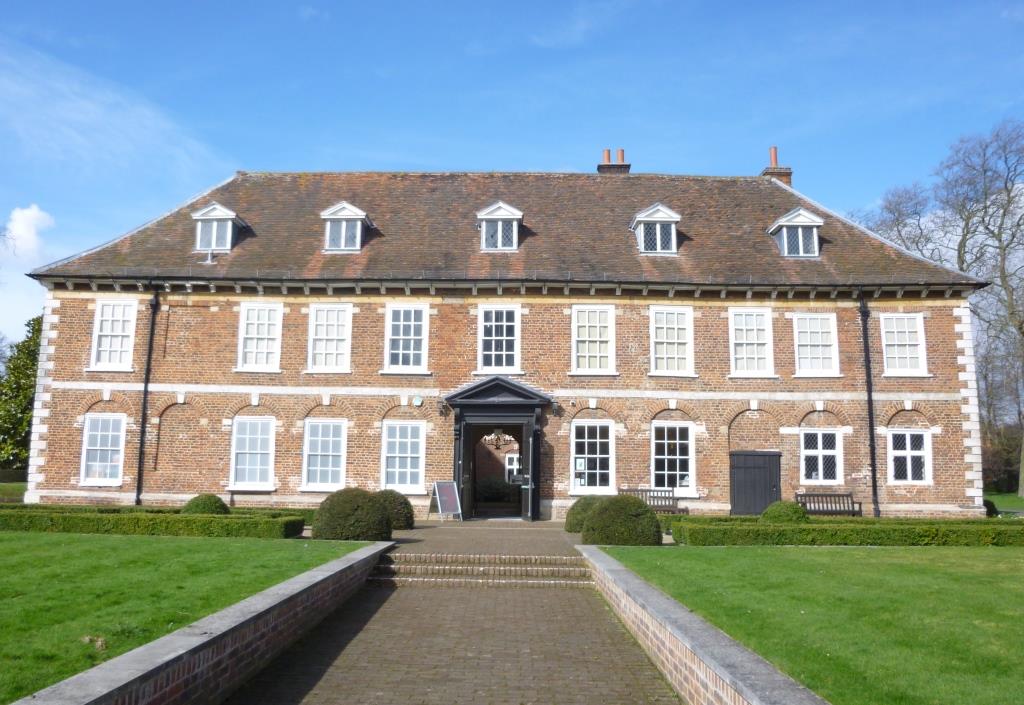 Hall Place, Bexley
Hall Place, Bexley Readers of this blog and my book will know that I have an abiding interest in the lives of those who fought in the Great War. One particular aspect which has always aroused my deep compassion is the fate of those who survived, but were badly disfigured. Some lived as recluses for the rest of their lives, and others braved the looks of horror they encountered when venturing out in public.
There is a historic relationship between those injured and the skill, not only of surgical teams, but of artists too. The German artist Otto Dix was one of those who portrayed the unpalatable face of war that, while disturbing, allows us to look at an image which, in a photograph, is so much starker.
I have a copy of Ernst Friedrich's 1924 anti-war book Krieg dem Kriege. I have actually stuck a post-it note on the fly-leaf, inscribed 'Warning! Contains very graphic images', and I keep it on a high shelf as I would not want little ones to come across it while exploring our bookshelves. The photographs are shocking. It was Friedrich’s aim to bring to readers' attention the true cost of war. The only other place I’ve seen images like this is at the tatty profit-making private exhibition next to a cafe near Ypres, behind which is a wood including what is claimed to be an original trench system. It has made a fortune for its owners, and is abhorred by the local museums, although some teachers leading trips prefer it, feeling it shows pupils something the others have sanitised.
I recently visited the Faces of the Great War exhibition at Hall Place in Bexley, Kent (and heard there a talk on a related subject: blog to follow). The exhibition told the story of the pioneers of plastic surgery in Britain from the point of view of the medical staff led by New-Zealand born surgeon Harold Gillies and their patients, based at the Queen Mary Military Hospital in Sidcup, which opened in 1917. Gillies, who moved here from the Cambridge Military Hospital , was inspired by the pioneering skin graft French surgeon Hippolyte Morstin, and in the next World War, Gillies' cousin Archibald McIndoe went on to reconstruct the faces of badly burnt airmen at East Grinstead.
Gillies recruited leading artists, including Henry Tonks and sculptor Kathleen Scott, widow of Scott of the Antarctic, to help in the work of rebuilding the ruined faces of the severely-wounded. More than 5,000 wounded men from Britain and its Empire came to Sidcup, and more than 11,000 operations were carried out.
Henry Tonks, a trained surgeon himself, went on to become a celebrated Professor at the Slade School of Art. Gillies asked him to make a record of men's facial injuries which could be referenced for operations and subsequent recovery. Tonks chose to work in pastels, as it was a quick medium that could be easily blended with the finger, and he wanted the men to sit for the shortest time possible. Today, these pastels can be viewed, upon request, at the Hunterian Museum in London. A number had been loaned to Hall Place, and they were displayed in a curtained-off section, again with a warning that the images might disturb. If today, with all we can see on the media, this notice is still considered necessary, how much harder it must have been for those with disfigurements to step out from the safety of their hospital wards or homes.
I found these portraits, accompanied by biographical detail, very touching. They included the following:
Private Robert Davidson, RAMC Orderly, was wounded in April 2016. He was initially reluctant to mix with his fellow patients, but after his discharge in 1919 he continued to work at the Queen Mary Hospital in Sidcup until the 1960s, having married Sidcup resident Alice Wise.
Private George J Stone, 1st Newfoundland Regiment, suffered a gunshot wound to the upper lip in France on the first day of the Battle of the Somme, 1 July 1916, aged 21. He contracted a severe infection six weeks after wounding, so his first operation was delayed until three months after the initial injury. He underwent six operations at the Cambridge Military Hospital, Aldershot and at Queen's Hospital, Sidcup. By August 1918, Private Stone declined any further treatment for facial injury, and returned home to Bell Island, off Newfoundland, to work as a machinist.
Private S Gardiner, a 35 year old New Zealander serving with the 7th Canterbury Regiment, suffered a gunshot wound on the First Day of the Somme which fractured his jaw. He underwent three operations, and ten months after his injury, surgeons tried to graft bone to bridge the gap in his jawbone. Because he lacked teeth, the wound didn't heal properly, and the graft was removed. In 1950, Gardiner returned to visit Gillies in the UK, reporting that six of his seven sons had served in the Second World War, all returning to NZ with their jaws intact.
Sadly, Lieutenant Dudley Grinlington, of the 48th Battalion of the Australian Imperial Force, did not fare so well. He was admitted to the Cambridge Military Hospital, Aldershot, in August 1916 after a gunshot wound to his left cheek nine days earlier. Discharged in March 1917, he returned to active service and was killed in action on 17 October during the Battle of Passchendaele. Having been shot in the knee, he perished, in the same casualty clearing station he had passed through a year earlier. He is buried in Nine Elms Military Cemetery, near Poperinghe.
The exhibition was curated with a sure, light touch - not overwhelming or overstuffed. I was glad to see and learn of some new things, among them:
The GRI Silver badge, first issued in 1916, was worn by those not able to fight: discharged owing to wounds, ill-health, or had reached the age of 51. Hopefully these helped to fend off the advances of the white-feather brigade...
Steel helmets were not standard issue to soldiers until 1916; before that they had soft caps.
Blue benches were provided along the road from St Mary's hospital to the village of Sidcup exclusively for recovering patients to sit on when out for a walk, which could be avoided, presumably, by more squeamish local residents (though many treated the soldiers with great kindness).
Ironically, the MG08 machine-gun, which could fire up to 400 rounds per minute, and was used by the German Army in WW1, was an adaptation of Hiram Maxim's original 1884 Maxim Gun, manufactured in Crayford (6 miles from Queen Mary's Hospital) by Vickers at the time when Maxim was resident in Bexley.
Further reading:
Krieg dem Kriege: Ernst Friedrich - Deutsche Verlags-Anstalt, Munchen (reprinted 2004)
My Dear, I Wanted to Tell You by Louisa Young (grand-daughter of Kathleen Scott)
A wonderful novel which I also learnt from.
War, Art & Surgery: The Work of Henry Tonks and Julia Midgley (Ed. Samuel JMM Alberti, Royal College of Surgeons, 2014)
Related Links:
The Tonks Pastels (Please note: graphic images)
http://www.gilliesarchives.org.uk/tonkspastels.htm
Otto Dix - article with images from The Guardian
https://www.theguardian.com/artanddesign/gallery/2014/may/14/art-apocalypse-otto-dix-first-world-war-der-krieg-in-pictures
Vickers Factory, Crayford
http://www.crayfordhistory.co.uk/index/history-of-vickers-crayford/

 RSS Feed
RSS Feed
